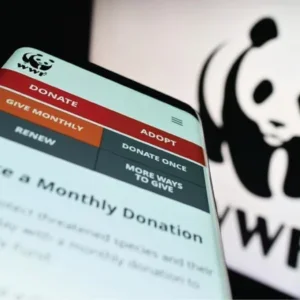The ostrich industry now ‘hardly exists’ in Namibia, according to Nakara Leather Tanning & Processing member Kevin Davidow. ‘When prices for ostrich were high, it was sustainable’, he said. ‘In Namibia, however, birds have to be kept in paddocks, to prevent scratching, and the feed has to be imported from South Africa. With prices as they are, it’s just not worth it, and we process hardly any ostrich at all.’
The ostrich industry in Zimbabwe has been ‘pretty consistent for the past three or four years’, according to PT Royal Ostrindo marketing manager Peter Cunningham. He said the industry ‘works closely together’, and produced about 24,000 finished skins a year, all for export. Most ostrich leather is finished by PT Royal Ostrindo but a number of companies take ostrich to wet-blue.
At Norton, near Harare, The Exotic Meat Company (TEMCO), which owns the Copro abattoir, ‘dominates the ostrich industry in this area’, according to abattoir manager Ken Worsley, and Cunningham said PT Royal and TEMCO had a good working relationship. There are also smaller players. As an exporter, the ostrich industry earns vital foreign exchange, but still faces the challenge of importing some of its needs. ‘We’re getting contractors to grow as much of the feed as we can’, Cunningham said, ‘but we still have to import quite a lot from South Africa.’
After several years of decline, South Africa’s ostrich industry has stabilised, in the view of SA Ostrich Business Chamber (SAOBC) CEO Anton Kruger.
‘We expect this year to slaughter 230,000 birds’, he said. ‘Last year it was 260,000, but we think it’s now bottomed out.’
He said an expected exodus of farmers from the industry had not occurred and there had been an increase in the number of chick raisers. ‘The farmers who are left are skilled at what they do’, he said. ‘They’re survivors.’ With longer lead times, ostrich leather prices had not yet shown the anticipated effects of fewer skins, ‘which should have a positive effect on prices because of supply and demand’, he said.
Ostrich meat, however, had ‘regained all the shelf space in Europe that it lost when there was a ban on the export of ostrich meat’, and had seen local demand increase eight fold. ‘There are two drivers: healthier lifestyles and the trend to ready-made meals. The acquisition of a food plant by Klein Karoo – while it was made in response to the ban – appears to have been strategically very successful.’ The SAOBC is increasing its generic South African ostrich leather marketing campaign. It’s also cultivating Russia as a potential market. ‘When President Putin visited South Africa last year, we presented him with an ostrich leather attaché case’, said Kruger. ‘In April we sponsored two South African designers to show at the Moscow fashion week and, in mid-May, I visited Russia along with a delegation from the DTI.’
He said the SAOBC had talks with a number of Russian leathergoods manufacturers and at least one of them, SAAJ, will shortly start making handbags with ostrich leather. ‘Moscow was an eye-opener’, he said. ‘There are ten million people in the city and 7% of them are classified as ‘very wealthy’. There’s also a real sense of style among the people. I think it offers a lot of potential.’






